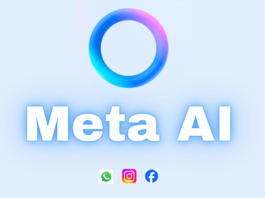In the dynamic landscape of artificial intelligence, Meta AI and Bing AI stand out as formidable contenders. Both platforms have made significant advancements, each bringing unique capabilities to the table. This article delves into a detailed comparison of these two AI giants, examining their features, integrations, and performance.
Meta AI: LLaMA 3
Meta AI’s latest offering, LLaMA 3, includes models with 8 billion and 70 billion parameters. These models are designed to handle a variety of tasks such as question answering, summarization, and few-shot learning. The LLaMA 3 models have shown impressive performance in benchmarks, rivalling other leading language models like GPT-4, which powers Bing AI.
One of the standout features of Meta AI is its seamless integration with social media platforms such as Facebook, Instagram, Messenger, and WhatsApp. This integration allows users to interact with the AI directly within these apps, making it highly accessible for generating content and assistance. Additionally, Meta AI’s real-time internet browsing capabilities enable it to fetch up-to-date information from both Google and Bing, making it a versatile tool for answering current events or detailed queries.
Bing AI: Powered by GPT-4
Bing AI, leveraging the power of OpenAI’s GPT-4, is deeply integrated into Microsoft’s ecosystem. This integration is particularly evident in the Microsoft Edge browser and Bing search engine, where Bing AI offers tailored outputs and source verification. This feature is highly beneficial for research and information retrieval tasks.
Bing AI provides different conversation styles—informative, creative, and balanced—catering to various user needs. It also includes robust features such as image generation via DALL-E. However, Bing AI’s usage is primarily restricted to Microsoft’s applications, and it imposes limits of 30 chats per session and 300 chats per day, which may be restrictive for some users.
Performance and Use Cases
Both Meta AI and Bing AI excel in different domains. Meta AI’s strength lies in its integration with social media and real-time browsing capabilities, making it an excellent choice for both casual and professional use. Its LLaMA 3 models are designed to be resource-efficient, suitable for applications including chatbots, language translation, and content generation.
On the other hand, Bing AI shines in research and information retrieval due to its deep integration with Microsoft’s ecosystem and its ability to verify sources. This makes it particularly useful for academic and professional research. Additionally, Bing AI offers free access to GPT-4 via Microsoft Edge, providing an edge over other tools that may require a subscription for similar capabilities.
Choosing the Right AI
Selecting between Meta AI and Bing AI depends largely on specific user needs and intended applications. For users seeking a versatile AI with robust social media integration and real-time information access, Meta AI is a compelling choice. However, for those focused on research, information verification, and seamless integration with Microsoft tools, Bing AI is likely the better option.
Both AI systems are continually evolving, with ongoing developments promising even more advanced features and capabilities in the future. Users should consider their unique requirements and the specific strengths of each AI to make an informed decision.







